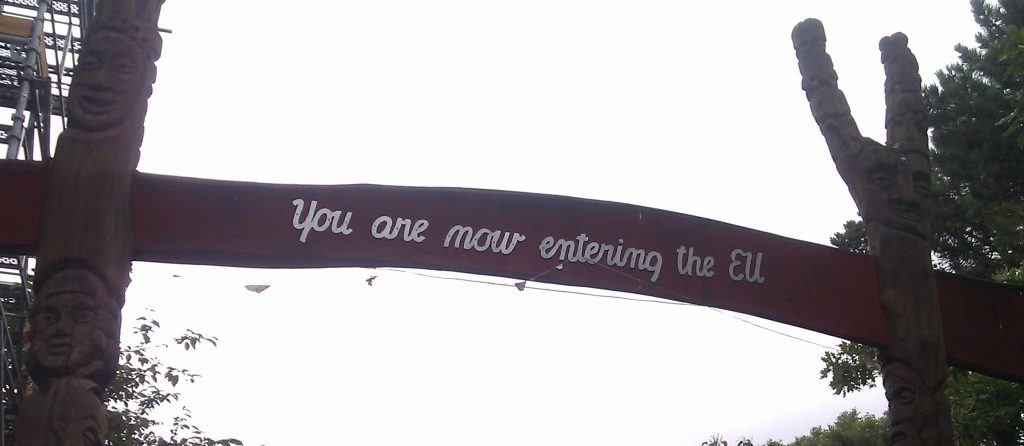We love Copenhagen. Everything about it just oozes understated style and sophistication. It is effortlessly cool. Bars and restaurants (or at least the ones we’ve visited) are contemporary without being up themselves. Shops are largely of the independent variety, and always seem to be owned by people with exquisite taste. The city is clean. Cyclists are definitely more important than motorists here – the infrastructure is actually geared up for people on two wheels, rather than four. Imagine that in England!
But there is one part of Copenhagen that’s very different – much more rough around the edges, than areas like Vesterbro (named by Lonely Planet in 2017 as one of the world’s coolest neighbourhoods), Nørrebro or Frederiksberg. Freetown Christiania, in the borough of Christianshavn, is a definitely in a world of its own. A real one-off. Created in a squatted military area in 1971, the anarchist spirit of Christiania quickly developed, in stark contrast to the site’s previous military use. Nowadays, approximately 900 people live in the car-free area, in a community that has its own rules and regulations, largely independent of the Danish government.

Since its opening, Christiania has been famous for its open cannabis trade, taking place in the aptly named and centrally located Pusher Street, in the so-called Green Light District. However, there is much less evidence of this trade these days, as many residents are now campaigning to clear Christiania of all drug activity. Although whispers of marijuana deals can still be heard within The Green Light District, locals have appealed to the people of Copenhagen, and visitors, asking them not to buy drugs in Christiania.
The whole area has a very relaxed feel, almost festival-like, in places. However, as a visitor, there are certain things that are good to know about – probably the main one being about taking (or not) taking photographs. However, tempting it is, try and resist snapping away on Pusher Street – and take notice of the sign at the entrance…
Taking photos is forbidden because buying and selling hash is still illegal.
Running – yes, really – is a no-no, too in Christiania, and very much discouraged. Another sign says ‘running causes panic’. Freetown Christiania is a peaceful area and if you’re just strolling about, taking in the sights, you’ll have little to worry about, but due to the cannabis trade, police raids take place quite often. Consequently, residents came up with the ‘Don’t Run’ rule especially for the area around the cafés, bars and restaurants where most people gather, so as to minimise commotion and painc. Keep your pace slow and steady, and you’ll be fine. It probably also goes without saying too, that it’s not the best idea to try and make any purchases on Pusher Street…

Christiania is colourful – buildings which have been taken over, are generally covered in artwork and grafitti. Everywhere you look, is a feast for your eyes. In fact, for all of your senses. But, cross the wooden bridge – Dyssebroen – that connects Christiania’s main area (Christianshavn Side) to the Amager side, and everything seems a lot more peaceful. Take a walk among the trees, where the locals’ colourful houses are dotted along the waterfront. In this area of Christiania, you’re free to take photos. And even run, if you feel like it. Some of the houses are ramshackle, cobbled together structures, which look as if they could blow away in a strong wind. Some are very cutesy and some look very architect designed. All sorts of materials are used to create these houses – and no two look the same. I’m not sure if I could live in one of them, but hats off to the residents for creating and developing such an interesting area. Up on leaving Christiania, you’re left in doubt that you are leaving a little independent state and re-entering the “real world”. As the sign at the exit says,

And indeed, just blocks away, you’ve arrived at Noma. A contrast, if ever there was one…
